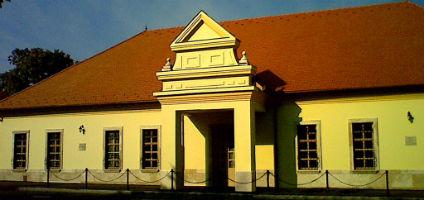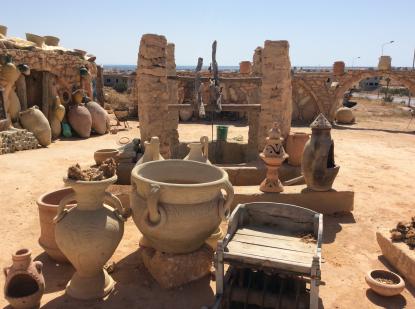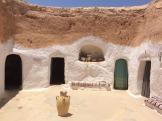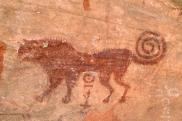2024. May 5. Sunday
"Matrica" Museum - Százhalombatta
 |
Address: 2440, Százhalombatta Gesztenyés út 1-3.
Phone number: (23) 354-591, (23) 540-070
E-mail: info@matricamuzeum.hu
Opening hours: Tue-Sun 10-17
Park 01.04-31.10. |
The exhibition has closed for visitors.
2015.10.20. - 2015.11.30.
Museum tickets, service costs:
|
Ticket for adults
|
780 HUF
|
|
|
Ticket for adults
|
780 HUF
|
|
|
Group ticket for adults
(on prior notice)
|
780 HUF
|
|
|
Group ticket for adults
|
780 HUF
|
|
|
Ticket for students
|
360 HUF
|
|
|
Ticket for students
|
360 HUF
|
|
|
Group ticket for students
(on prior notice)
|
360 HUF
|
|
|
Group ticket for students
|
360 HUF
|
|
|
Ticket for pensioners
|
360 HUF
|
|
|
Ticket for pensioners
|
360 HUF
|
|
|
Ticket for families
(max. 5 people)
|
2280 HUF
|
/ family
|
|
Ticket for families
|
2280 HUF
|
/ family
|
|
Combined ticket for adults
(valid for the Museum + the Archeology Park)
|
1200 HUF
|
|
|
Combined ticket for students
(valid for the Museum + the Archeology Park)
|
600 HUF
|
|
|
Combined ticket for pensioners
(valid for the Museum + the Archeology Park)
|
600 HUF
|
|
|
Combined ticket for families
(valid for the Museum + the Archeology Park, max. 5 people)
|
3000 HUF
|
/ family
|
Who are the Berber? When we think about the inhabitants of North Africa, what comes to mind is the Arab people and their culture. Few people know that the indigenous population in this area are actually the Berbers, who were named by the Romans. The Berber call themselves Amazigh, or Amazigh Berber, and the Berber are called Imazigh. The Berbers carved their thought into rocks approx. 10,000 years ago. They survived to this day, and most were placed under the protection of UNESCO. Not everyone know that the continent of Africa was actually named after a Berber tribe, the Afri. This was first tribe with which the Roman conquerors encountered in North Africa.

The exhibition located in the museum gallery hall provides a comprehensive view of the Berbers, starting from prehistoric to modern times.
The exhibition starts with rock carvings represented by lifelike scenery. These rock paintings are located in regions inhabited by Berbers and are from various historical periods.
The longitudinal wall show the history of Berber tribes and territories on 6 Tabloid with texts and pictures, with landscapes showing environmental changes behind them. The part of the exhibition directs attention to the work of László Almásy in a tabloid.
The shorter wall has pictures of vocations inherited from generation to generation with original objects below them. Craftsmen talk about their craft in short films played on screens on the walls over the tabloids.
Tuareg tent, a Matmata house dug in the ground and a tower-domed house room represent dwelling interiors. In these we also show some Berber equipment and objects. We also shows what a traditional Berber wedding is like. We have two brides and bridegrooms wearing original Berber costumes. There is a 'wooden cage' between them called 'jahfa' fastened on a dromedary, which was used to carry the bride.
The room designed for children has a toys tent with various tactile objects, where a film is playing on the life of the Matmata lifestyle. Wre also offer museum pedagogical and occupational activities for our visitors. At the end of the exhibition we discuss the most famous Berber people who have ever lived.

The exhibition located in the museum gallery hall provides a comprehensive view of the Berbers, starting from prehistoric to modern times.
The exhibition starts with rock carvings represented by lifelike scenery. These rock paintings are located in regions inhabited by Berbers and are from various historical periods.
The longitudinal wall show the history of Berber tribes and territories on 6 Tabloid with texts and pictures, with landscapes showing environmental changes behind them. The part of the exhibition directs attention to the work of László Almásy in a tabloid.
The shorter wall has pictures of vocations inherited from generation to generation with original objects below them. Craftsmen talk about their craft in short films played on screens on the walls over the tabloids.
Tuareg tent, a Matmata house dug in the ground and a tower-domed house room represent dwelling interiors. In these we also show some Berber equipment and objects. We also shows what a traditional Berber wedding is like. We have two brides and bridegrooms wearing original Berber costumes. There is a 'wooden cage' between them called 'jahfa' fastened on a dromedary, which was used to carry the bride.
The room designed for children has a toys tent with various tactile objects, where a film is playing on the life of the Matmata lifestyle. Wre also offer museum pedagogical and occupational activities for our visitors. At the end of the exhibition we discuss the most famous Berber people who have ever lived.


